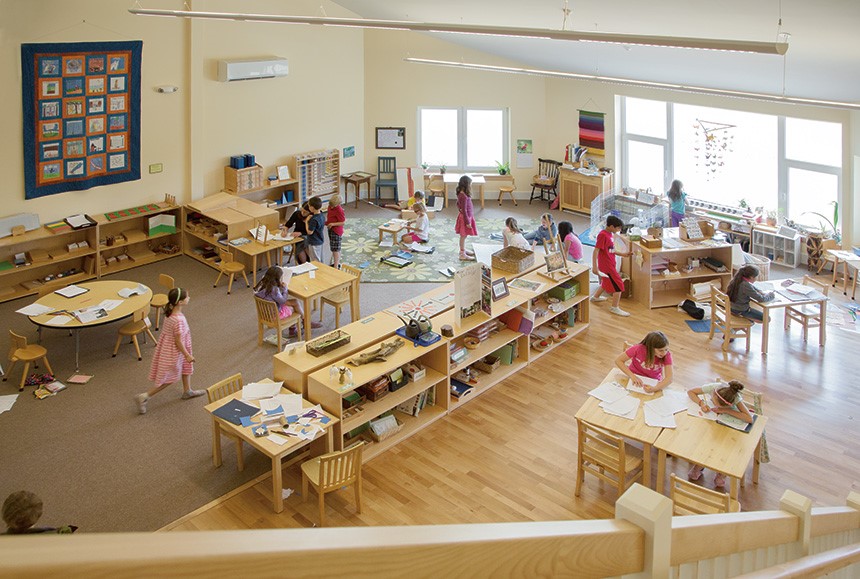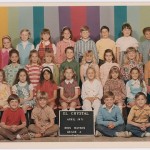During our first glance at the prepared learning environment, we looked at how freedom, structure and order, and beauty are key elements that answer the developmental needs of elementary children to create structure. Today, we will look at the last three aspects (nature and reality, social environment, and intellectual environment) and how they support the habitat.
- Question: How do I encourage creativity without going too far into fantasy?
Answer: Nature and Reality – Use of the imagination is a critical part of the development of the elementary child (ages 6-12), and it is important that the imagination is grounded in reality. This may sound like a contradiction, but the Montessori approach views use of imagination as an extension of reality into what could be. Children are exposed to nature as much as possible through school-based gardens, frequent outings into the community, and use of real materials (ie. wood and silverware) instead of plastic replicas as much as possible. Nature is brought into the class for appreciation, observation, and learning via class pets, plants, flowers, and artifacts to be used for a variety of projects by the children. This exposure to nature helps to stir the imagination as they think thoughts such as “How did someone know how to change a piece of wood into this wooden box?”.
- Question: How do I manage excessive talking in the class when they should be working?
Answer: Social Environment- Children in elementary are highly social beings. They are very interested in the “why” and “how” of life, and where they fit in. Students at this age are often more open to learning from their peers so create flexibility in the environment to allow this. The prepared environment uses this natural need for social interaction by framing it within the expectation of meaningful conversations. Conversations should relate to the work at hand or other academic areas of interest. Beyond academics, peer input is valued for conflict resolution and understanding of social justice. Our class includes a Peace Table where students can go to discuss their conflicts and find solutions.
- Question: How can I help students get right to work? How can I help them go deeper?
Answer: Intellectual Environment- The prepared classroom includes all of the materials needed for the child to practice lessons. Materials are kept clean, complete, and appealing so students will want to handle them. Tattered or incomplete sets are removed or replaced. The classroom does not include all that the child will need to satisfy intellectual curiosity. For this, the class is purposefully limited so that the child is encouraged to go beyond into the community. This naturally leads to deeper questioning and investigations. Students are involved in planning how they will spend their time and what they will work on. They also take a part in identifying their unique learning styles, needs, and modifying the environment to meet those needs. Having full access to the class and its materials gives the child ownership for being academically active.
All six of these practices (freedom, structure and order, beauty, nature and reality, social environment, and intellectual environment) are environmental and social elements that impact my ability to teach in a multiage classroom. The more independent the students are, the more freedom I have to focus on meaningful instruction. With all of the ownership that the students take on, I am still the gatekeeper of the class. At the end of the day, it is up to me to ensure that the environment is properly restored and prepared. Fluidity is the word that I will use for this skill. In addition to meeting the basic needs of the children, the environment also needs to reflect current needs and interests. It is up to me to ensure that these elements are properly introduced when needed, and taken out when they have served their purpose. I would encourage teachers in a traditional class to consider the elements in this article that are appealing and how they can be incorporated into the classroom. With all of this said, I have not touched on the preparation of the most important element of the school-based…the teacher. But, that is a story for another day.
Recommended readings by Dr. Maria Montessori:
The Secret of Childhood (1936)
To Educate the Human Potential (1947)
The Absorbent Mind (1949)
Web search phrase: The prepared environment and Montessori










Comments 4
Saying that creativity is grounded in reality reminds me of two conversations I often have. With adults someone sometimes says, “Wow, that’s really out of the box thinking!” But mostly it’s not, it’s realizing the unused potential of the box. Imagine candidates interviewing for a job that requires creativity. Who’s the better better project – One of the dozens who claim to be “out of the box” thinkers, or one who says they look in to the value of each limited resource and seek to find its full potential? I give engineering challenges to kids where they have some task to complete with the bare minimum of materials. When we debrief they often say the couldn’t be more creative without more materials, but I argue the opposite and ask who’s more creative with money, the millionaire or the hourly worker? It’s usually a pretty deep discussion. One more activity is to ask kids to name 10 things they can use a paper clip for. My 8th graders don’t do so well but I asked my kid once when he was about 5 and he just went on and on, until he said, “There are dozens!”
I agree with you 100%! I see this weekly in class. It is amazing what children are able to do when expected to and allowed to create solutions and alternatives using the resources they have available. We have a rule in my school: Unnecessary help is a hindrance. Allowing students to use what they have without building in unnecessary resources is one of the greatest helps and freedoms we can give the child. Thank you for your insight.
Hi Yolanda-
Thank you for sharing your classroom…
How do you facilitate those conversations or activities around involving your scholars in planning, how they will spend their time and what they will work on? How do you help them in identifying their unique learning styles, needs, and modifying the environment to meet those needs?
Hello! There are several methods that I use.I use observation as a key indicator to where students are in their learning/understanding. The majority of the materials include a control of error which help students self correct. I use open ended questioning that require students to explain their thinking/reasoning. My albums includes a natural progression of lessons, so I know what came before/what comes next. Students are allowed to experiment with different learning styles to help them learn what works for them and what does not. Also, they are allowed to struggle but not to the point of frustration. This helps them learn what is too hard or too easy for them. It also builds in a natural reward for when they achieve a complicated/challenging task. Modifications are typically a mater of rearranging or creating a supplemental material if needed. We also try new things and keep or change or get rid of based on the results. Another element: the students are expected and required to think, get involved, and engage with their learning. It must be said that I have an assistant to help manage all of this.